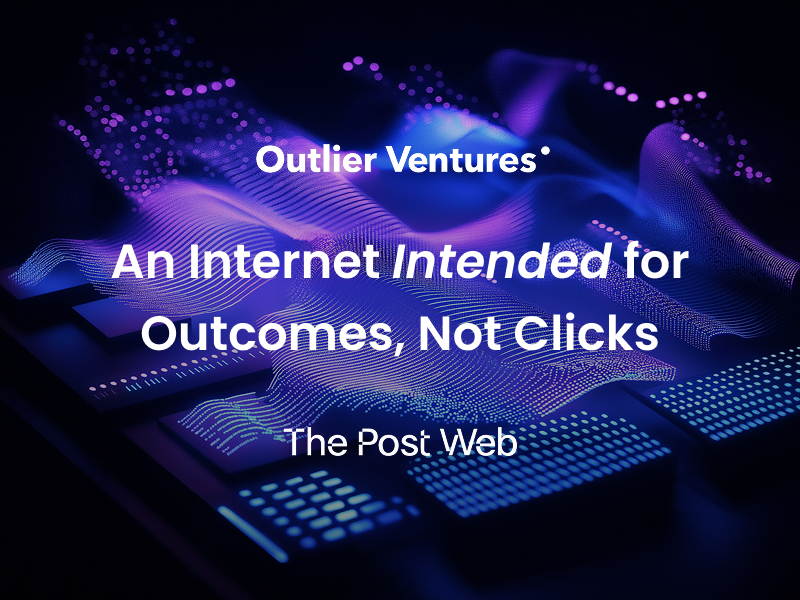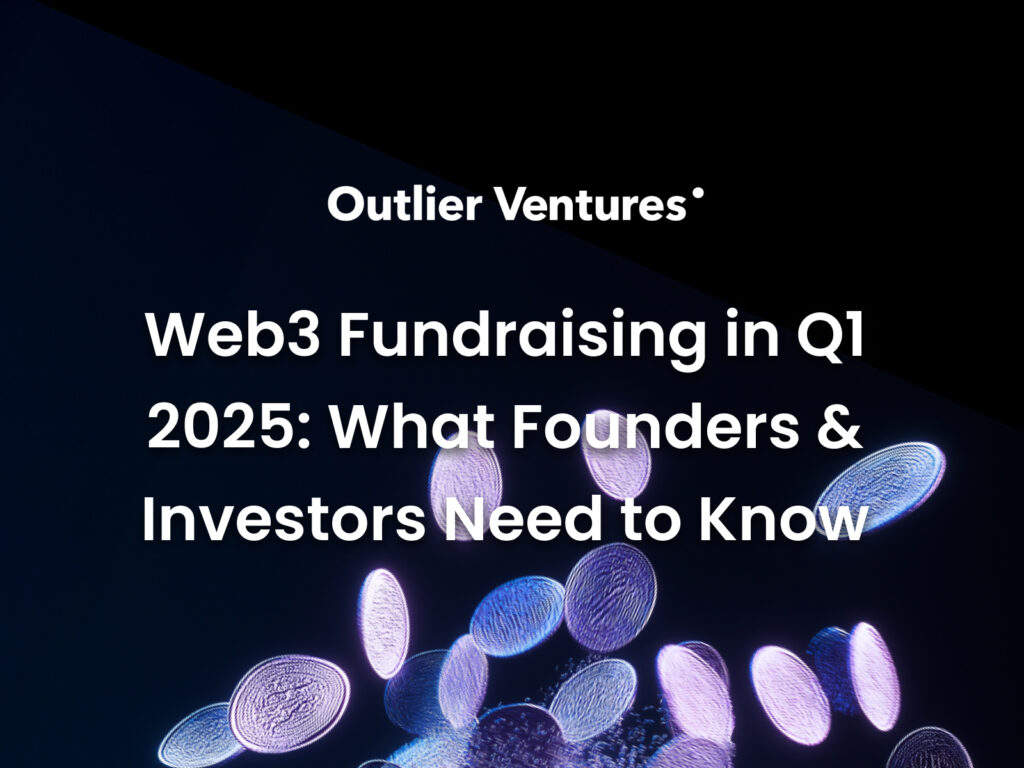When it comes to exploring whether your idea is investable, it is key to identify the need you’re solving, the size of the problem, and the potential of the solution in the years to come. As Head of Investment at Outlier Ventures, Lluís shares seven questions stakeholders are likely to ask about founders and their ideas. Understanding these as a founder is crucial as you seek investment.
[1] How has your past set you up to succeed in the future as a founder?
There is often a perception of startup founders launching companies straight out of university. However, according to the Harvard Business Review, among the top 0.1 per cent of startups (based on growth in the first five years), the founders launched on average when they were 45 years old, revealing how relevant previous experience can be.
Although there is a lot of noise in Web3, as an investor, I want to know who is in the team. What have they done in the past, and how will they help them succeed in the future? What this founder or founding team has today is not as important as what they did yesterday and how that links to their vision for the future. Do they have experience in a specific industry? Do they have any context in the particular area of focus that will help them succeed?
For example, I came across a team focusing on telecommunication solutions, which had revenue and traction in Web2 but had reached a point where they could not grow more unless they changed their business model to Web3. They could link how their past was setting them to succeed in web3 in the future and transitioned successfully to a Web3 business model using a blockchain that relied on their core technology.
[2] Are you building for tomorrow or today?
Web3 is a very nascent space – so it is not about building for today. It is about building for tomorrow’s users. For example, there are currently 106 million crypto users worldwide, but one survey last year showed that 61 per cent only started investing in cryptocurrencies within the past six months. The space is growing rapidly, and anything being built now will likely only become a fully-fledged solution in a few years.
This means that solutions should cater to users’ needs at that time. It is not about building for today’s users – it is about anticipating and catering to the needs of those people that are not familiar with Web3 and building something that works for them. After all, in a recent McKinsey survey across India, Singapore, the United Kingdom, and the United States, 20 per cent of respondents aged 25 to 44 reported owning digital assets.
Within that group, two-thirds had already made payments using digital assets (likely for peer-to-peer payments or Web3 commerce), while over half used NFTs as a digital identity or digital assets for play-to-earn activities. Due to these high engagement rates, brands like Starbucks are now joining and using NFTs – although they may not even call them that, despite using the technology to create new customer experiences.
An example of a team building for tomorrow is Rand, an easy-to-use app enabling users to pool their money together and generate yield on it quicker than they would in a traditional bank. As a simple mobile wallet and debit card that grows users’ money and pays their expenses on autopilot, we invested in Rand as it helps more customers to gain full access to crypto, within UX the customers are familiar and comfortable with.
<Read more about why we invested in Rand, a simple to use, gamified group investing Platform>
Both users and brands care about the technology more than they care about what the technology is called. It is crucial not to fixate on the people in Web3 today as they are simply the early adopters who are pioneering the way for the audiences to come. The main ones to build for are those who will be onboarded in the next few years.
[3] Are time and money the only other things you need to succeed?
If at an early stage, you might be trying to close a seed round or join an accelerator. You have a team of people, an idea, and your past experiences, but you have not created what you’re promising to develop. Perhaps you have a proof of concept and a basic MVP. Investors want to see that time and money are the only missing ingredients for you to succeed.
Ideally, your pitch to investors is that with money and time, you will build what you are promising to create. Your pitch can be strengthened by showing a basic proof of concept or having potential customers mention that they would really like to buy from you or work with you to develop that solution.
After all – only two in five startups are profitable, and one in three will either break even or keep losing money. To be on the best possible path to succeed, it is vital to demonstrate traction and the path to future profitability. This links to my next point.
[4] Do you have product-market fit use cases for certain customer groups and validation with potential customers?
Initially, it is not always possible to be fully aware of which customer groups your core technology could be most useful for, or which features matter most to each of your different customers. However, 14 per cent of startups fail due to a misunderstanding or a lack of attention paid to their customers’ needs – so it helps to understand everything you could do with your core tech and to validate it with those using your solution continually.
Go ask your customers what they think. Don’t do a very complex analysis of market sizing and all these things because they don’t work at the end of the day. What you want to know is that the people you want to use your solution are the ones that are interested in it, and then you can prioritise what’s best for you.
Stick to your core technology and understand the market. Remember that it is unnecessary to focus too much on a specific application or product, especially at the beginning. Instead, explore different ways and validate with customers if that is the fastest and most profitable route to market.
[5] Which features of your MVP are key for each of your target users?
When you are starting out, it is tempting to create something that works for a lot of different people. However, your MVP should be specific and cater to the needs of a specific customer group, instead of creating something general and superficial that kind of works for everyone but doesn’t really work for anyone.
Instead, it’s vital to, first of all, know your potential customers. This is not a simple process: customer validation is an ongoing process instead of a one-time event. An estimated 95 per cent of new products fail, and the key to success tends to be in adjusting according to customer feedback as early as possible.
Once you have found what you believe to be your specific customer group, prioritise them as business opportunities and develop something specific that caters to all their needs extensively, but nobody else’s.
[6] Do you know the market, the underserved part of it, and your competitors?
There can be a lot of focus on the size of the total addressable or serviceable market. What is more important is showing that within a big market, you have found a part that needs something not being received today – and that now is the time to deliver it. Ideally, you have identified the need, know how to get to those people and can show they need your solution. That matters more than broad market assumptions.
We were working with a company specialising in security solutions for blockchains that had eight different products. After extensive research and validation with multiple stakeholders, we concluded that one was not being prioritised within those products. From a technological point of view, this product was very simple. Yet there was a clear market need, and it would gain attention from a wide community of retail users. Prioritising that use case above all the others led to new opportunities.
Many startups come to investors and claim not to have competitors, but in most cases, that is simply not true. Underestimating or not understanding the competition is why a fifth of startups fail, so you must understand the market, know who the competitors are, and demonstrate your points of difference.
[7] Are you being reasonable on timelines and expected traction?
It can be tough to estimate the length of time it will take to develop your solution, and Web3 changes very quickly. It can be difficult to predict what technology will be available or what people will care about, as the landscape tends to change every six months. However, you need to have a long-term vision and probably plan to reach that vision in three or four years.
With that, there should be some understanding around the milestones in that time which prove your vision is right and that you are on the right path. For example: what will need to happen six months from now so you can succeed in three years with your vision? What will need to happen one year from now for that? What are the challenges that you’ll face then? These demonstrate that you have a clarity of vision and mission.
You do not need to prove you have all the problems figured out and solved. However, having clear answers to the seven questions above shows that you understand the game you are playing and have a good strategy for doing so. Every investor knows there is high risk involved in any venture investing; they are betting on a team and a strategic approach. The concepts above help to strengthen yours.
In this piece, you’ve learned about analyzing whether your idea is investable. Here are our top tips:
- Web3 is a very nascent space – so it is not about building for today. It is about building for tomorrow’s users.
- Your MVP should be specific and cater to the needs of a specific customer group instead of creating something general and superficial that kind of works for everyone but doesn’t really work for anyone
- You must understand the market, know the competitors, and demonstrate your points of difference.
Further reading:
- Venture Deals by Brad Feld and Jason Mendelson
- The New Business Road Test: What entrepreneurs and investors should do before launching a lean start-up by John Mullins
- Mastering the VC Game by Jeffrey Bussgang




